WHAT happened on his third tour of Afghanistan is shrouded in operational secrecy and too painful for Marty, a former SAS operator, to discuss. The hurt that almost destroyed him stays close. His wife, Ness, thought she’d lost him many times.
“There’s three reasons I’m still alive,” says Marty, 37, who wants to go by his first name. “The first is I had determination. The second reason is Ness. The third reason is this little dog here, who licked tears off my face when I was lying, crying on the floor.”
Australians are indoctrinated to a belief that those who serve will be embraced by Defence and the Department of Veterans Affairs long after they leave. Cradle-to-the-grave, they call it.
Across Australia, the faces of those who have known homelessness, post-traumatic stress disorder and suicide attempts, tell a different story. The government’s affairs when it comes to looking after young veterans remain badly out of order.
Defence cannot shake a culture that sees those with mental injury sidelined and drummed out of service.
DVA, which processes veteran claims, is plagued by a system so archaic it has not yet arrived in the digital age. Files are sent snail mail, city to city, to sections within DVA for lengthy processing. They get lost or stalled on the desks, adding to the distress of young vets who may be homeless or contemplating suicide.
In March, a Senate committee inquiry found veterans were “being discharged into homelessness” from psychiatric wards. It considered this a “significant dereliction of duty” by DVA and the hospitals concerned.
Such was the case with one young vet we encountered: he’d been in Adelaide’s Ward 17 suffering acute PTSD. Upon discharge, several weeks ago, Rowhan Weatherell, 27, from Victoria, had nowhere to go.
Had he not come to the attention of the Adelaide’s Homes for Heroes, he says: “I’d be homeless.”
Weatherell broke his back on a training exercise in 2013 and spent six months in hospital in a spinal brace and another six learning to walk again. He was declared medically unfit and had to leave the army. DVA sent him to a doctor who said he was able to do a few hours a week at a civilian desk job. DVA declared he was therefore ineligible for incapacity payments.
“I had a breakdown and I felt abandoned,” he says. “As soon as you’re not part of the army they don’t want to know you. And it was all I’d known since I was 17.” Once he’d had a breakdown, he says “that forced DVA to change their attitude. Now they’ve decided to help me out.” He will soon start receiving incapacity payments, but he remains angry. “DVA’s job isn’t to help soldiers. It’s to minimise debt to the Commonwealth. I never spoke to the same person twice in DVA, never.”
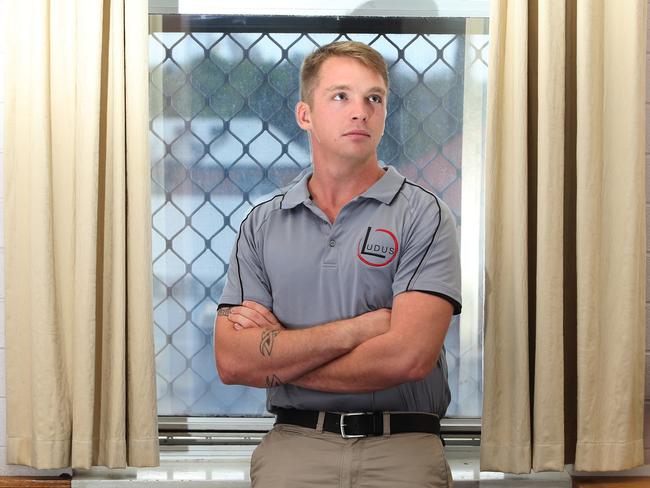
Housing is not DVA’s responsibility but the committee said that “does not discharge DVA of its obligation to support veterans and assist them to access one of the most basic human needs, stable housing.”
Nor did it accept DVA’s excuses that digitising records would take time: “[It] must be made a priority and should be funded accordingly.”
This was a thorough politically bipartisan caning. DVA is clearly struggling. So are many of the 70,000 Australians have deployed since East Timor in 1999.
ADF’s 2010 Mental Health Prevalence and Wellbeing study said 10 per cent of combat veterans will experience PTSD; 30 per cent will experience lifetime trauma. PTSD rates are even higher among those who have witnessed atrocity.
Stuart “Nev” Bonner, 49, a former SAS operator with his own PTSD issues who now helps vets with pension battles, says the gap in services between discharge and getting DVA support needs urgent redress.
“I reckon the current rate of total incapacity from overseas service is about 30 per cent,” he says. “I can’t prove it, but that’s what I’m seeing. DVA should bank on a set number they need to finance for the rest of their lives.
“And a politician needs to have that at the forefront of their mind when ordering a deployment.”

Without Ness, I wouldn’t be here.
- Marty, with Ness and Boss.
MARTY’S HOPE TO HELP OTHERS
COMING HOME to SAS headquarters in Perth in 2011, combat-hardened in one of the world’s legendary fighting units, Marty stopped wanting to work. He locked himself away, drank and smoked dope.
Called in for questioning for what he thought was an off-the-record chat, he fessed to the dope. That was a mistake. Military authority can process alcohol abuse. Not dope.
Asked to show cause why he should remain in the regiment, he couldn’t find the right answer. Something had gone wrong, but the thought of seeking psychiatric help was foreign to him.
Marty, who grew up in WA, says the commanding officer gave him a slip of paper. “I didn’t know what I was signing,” he says. “I signed it. And left.” After seven years of service, that was it.
Clearly showing signs of a condition that would later be diagnosed as PTSD, Marty says he was treated as “a waste of space”. He drove down the West Coast Highway, jobless after being asked to do the maximum by his government. “I pulled over, spewed out the door of my car,” he says. “That was my exit from the army.”
He lived on his severance pay and got a job in the mines. His condition worsened. His shame was such that but for a few mates he kept away from his old SAS buddies and hid in a room at a mate’s.
Then he met Ness, who is now pregnant. She tells how their honeymoon in Bali last year was pretty much wrecked by Marty’s hotel-room drinking. At first she didn’t understand what she was seeing.
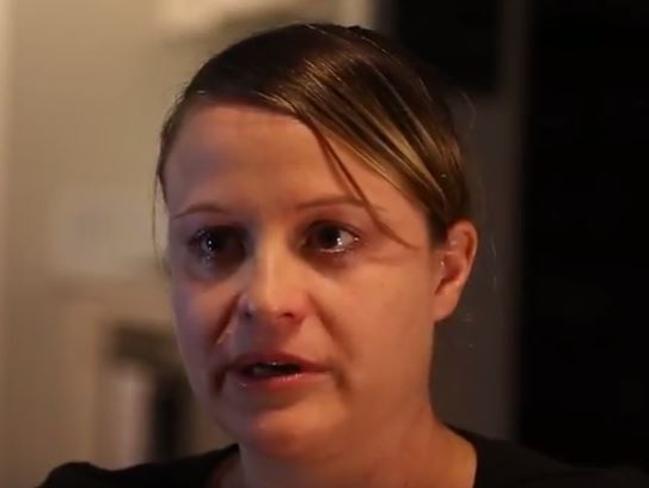
“We had six or seven visits to hospital,” says Ness. One time she called an ambulance. He was so lifeless she thought he was dead. “His drinking was horrible. Last year, it was daily.” She’s stuck by Marty because she could see that he was “a good guy. I love him.”
In a positive move, DVA has now introduced a “non-liability” medical card for vets with mental health issues, which helps get things rolling fast for vets in need.
Last year, Marty finally did a 10-week PTSD course at Perth’s Hollywood Hospital, which helped a great deal. He’s stopped drinking, altogether, though knows he’s not in the clear yet.
He is typical among special-force operators who find themselves drawn back to battle, and the extra bucks that come with war service. Admitting to problems can be a career-ending move.
Breakdowns manifest slowly: sitting on a couch for hours, reviewing the one moment they wish they could change; jumping at shadows; crying for no explicable reason; developing irrational contempt for those who have not experienced death and carnage; lonely drinking marathons; pushing people away.
Wives and partners can’t cope. “If they can keep their wife onside, they can keep their home and their health,” says Nev Bonner. “But if they lose that, they say ‘bugger it’.” The spiral starts.
Marty blames himself, saying: “I thought I was cut out for the job. Maybe I wasn’t.” He should never have been left with such self-recriminating thoughts. He was good enough for the SAS — that’s why he was selected.
Defence and DVA can point to the Return to Australia screening form the soldier signed, before exiting Iraq or Afghanistan.
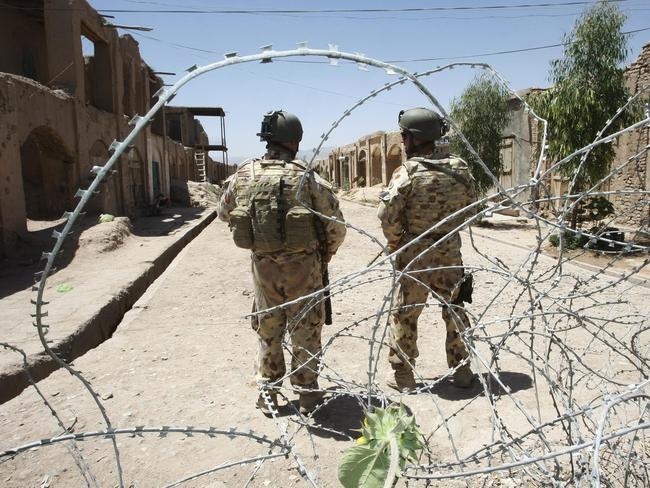
The form asks if he was in danger of being killed or injured, saw atrocities, and whether they feel they have stressors that warrant psychological help.
The convention is that most tick “No”, fearing an admission could see them sidelined or denied another deployment.
Marty is talking in the hope he can help others. He’s anxious not to be portrayed as a whinger. He’s not. It’s just that he was wounded by something other than a bullet or an IED.
“Without Ness I wouldn’t be here,” he says. “The thanks I can give her is not to drink.” He wants his discharge records changed to reflect that he had a medical condition. But heading into the DVA bureaucracy, and getting them to acknowledge a condition, is where the fight begins.
WHY VETS NEED MORE HELP
THE PUBLIC perception of DVA is of a government agency there to assist vets. Many vets see it as an adversarial insurance firm that will do all in its power to block claims.
Joshua Hawes, in a recent life attached to the SAS as an on-base psychologist, a role that also saw him deployed to war, says DVA — which has seen four federal ministers in three years — is a mess.
“There are some very good people in DVA,” says Hawes. “I know some who have saved people’s lives. That’s 10 per cent. The rest are tired, burnt-out, horrible creatures.”
A kinder view might be that DVA is confused as well. Due to cost-saving measures, no single capital city DVA bureau processes one file, which may involve multiple claims for PTSD and depression, alcohol or drug abuse, erectile dysfunction and orthopedic issues.
Files may be two or three reams thick. DVA staffers, spread across the country due to cost saving, cannot click on a vet’s document: they need to wait for the hard copy file to arrive. Meanwhile, vets get angry.
“If a person put in their claim tomorrow,” says Hawes, “we would spend the next 12 months nursing that client through their fears and anxieties about dealing with DVA.”
Infantryman Lee Sarich, 39, was in a light armoured vehicle that hit an IED in 2007.
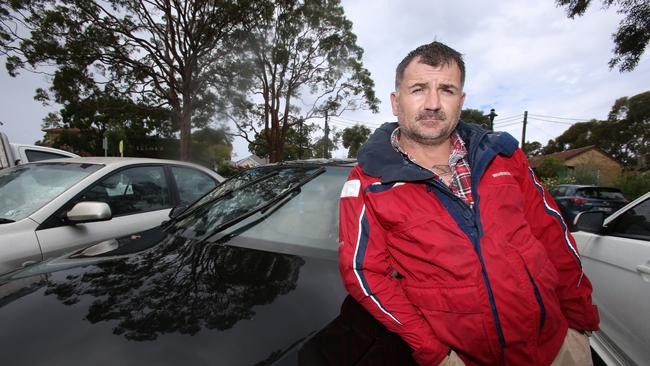
“Poppy got killed,” Sarich says. He’s referring to SAS Trooper David “Poppy” Pearce, who was driving the LAV. Sarich’s second tour of Afghanistan, in 2010, ended prematurely after he exhibited overt signs of PTSD.
Due to his stress, including vivid flashbacks, he became homeless in 2013, and now resides in Narrabeen’s Homes for Heroes, which accommodates vets with nowhere to go.
Sarich was on national television a year ago talking about his PTSD and the failures to diagnose him. You’d think that might have sparked a response from DVA, if only to shut him up.
Sarich applied for a total incapacity pension through DVA 12 months ago. “They said it would take another 12 months,” he says.
“Then, two weeks ago, they told me my application was incomplete because I needed to see a rehabilitation psychologist.
“Now, I’ve got to start the whole process again, which could take another 12 months. But I don’t know if I will. I’m too angry.”
Adrian Talbot, an Australian who served with British commandos and developed PTSD, runs the Narrabeen Homes for Heroes. The numbers of residents fluctuate — there are currently 35 or so vets in the centre, most from older conflicts.
“If there was better linkage between Defence and DVA, we wouldn’t have people on the streets and we wouldn’t need Homes for Heroes,” says Talbot. “Why does a homeless veteran centre even need to exist?”
WHEN COMING HOME HURTS
IN HEAVY Sydney rain, homeless people huddle at Reverend Bill Crews’ food van. Numbers are down this night; most are staying in their hiding holes. Asking if anyone knows someone who served in Iraq or Afghanistan draws no response.
Nothing can be done for the Afghanistan-era SAS vet who wanders between Fremantle and Cairns. He’s refused repeated offers of help from regiment mates — his psychosis goes well beyond PTSD.
The reality is that few younger vets are living on the streets, but “homelessness” is broadly defined: it is not the stereotype of the ragged man pushing a shopping trolley, but can refer to someone couch-surfing, living in a car, taking long camping trips, or having no permanent address.
All over the country, ex-service organisations, or ESOs, are springing up. There is such a network that word of any young vet on the streets prompts a rapid intervention.
However, RSL Care chairman and former brigadier Pat McIntosh cautions that there is now a “proliferation of ESOs who are pulling in a lot of money from donations and they’re not paying tax on that revenue.
“There is a need for them to operate cooperatively. That co-ordination is not there at the moment. More of that money should be spent on vet welfare.”
No one knows the true number of young vets who meet the criteria of homelessness. In 2009, DVA said there were around 3000 homeless vets, though that was recently downgraded to between 2-300.
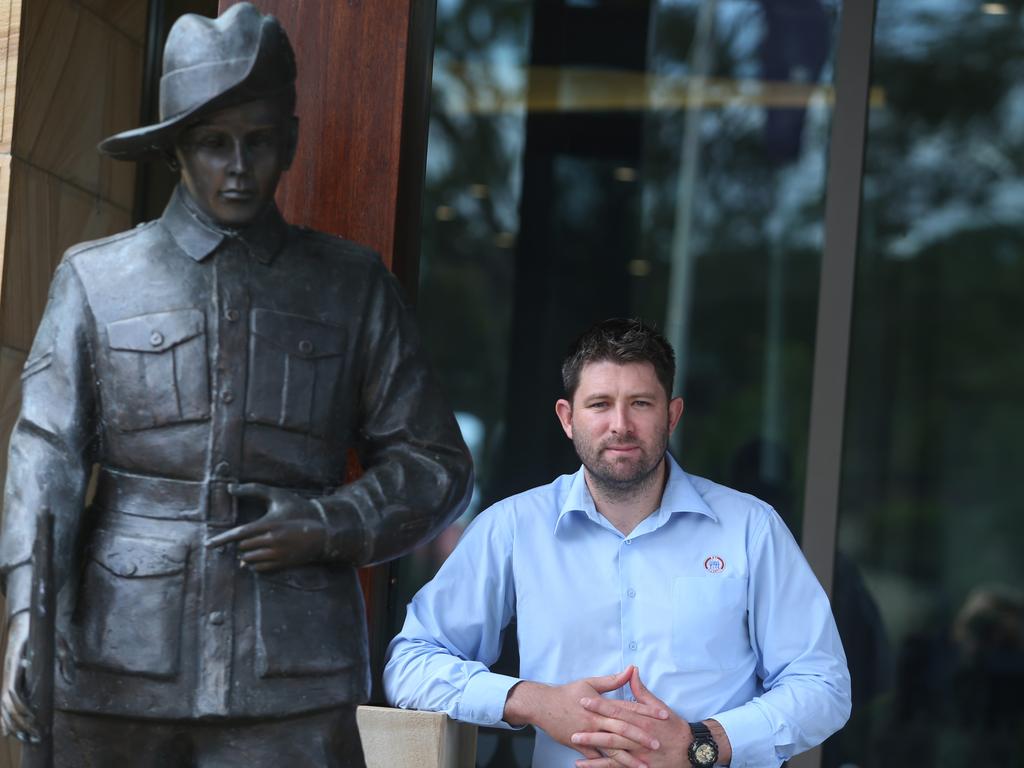
Why does a homeless veteran centre even need to exist?
- Adrian Talbot, from Narrabeen Homes for Heroes.
Homelessness is a divisive and emotional issue in the vet community, who argue about the extent of the problem. No one really knows who is out there but Talbot says: “They all have similar stories. The majority in limbo in terms of their pensions.”
Defence offers a two-day course into DVA support for those about to discharge, but only a handful of volunteers across the country really understand DVA’s intricacies. The work is exhausting as they take on the vets’ problems as their own.
Ex-SAS officer John Burrows is one of the most respected — and worn out — pension advocates in the country. He’s been helping vets negotiate DVA claims for 12 years and says it’s not getting easier.
Those who served any time prior to 2004 find their claims fall under three different acts, meaning different sets of cross-claims are needed.
That has been streamlined, but Burrows says the “processing of applications, claims, reviews and requests for advice and support are often taking an inordinate amount of time”. The volunteers are often older and their numbers diminishing. “And on many occasions they are just giving up because of frustration.”
News Corp Australia spoke to one older veteran who was helping a younger suicidal vet with his DVA claims. Despite the great goodwill of the older bloke, he was hopelessly out of his depth. It looked like he was taking the vet backwards.
The remarkable Liam Haven, 28, who lost all but two per cent of his vision in an Iraqi IED blast in 2008, and since then has gone on to teach himself to play a mean guitar, developed PTSD but has stayed in front of his problems.
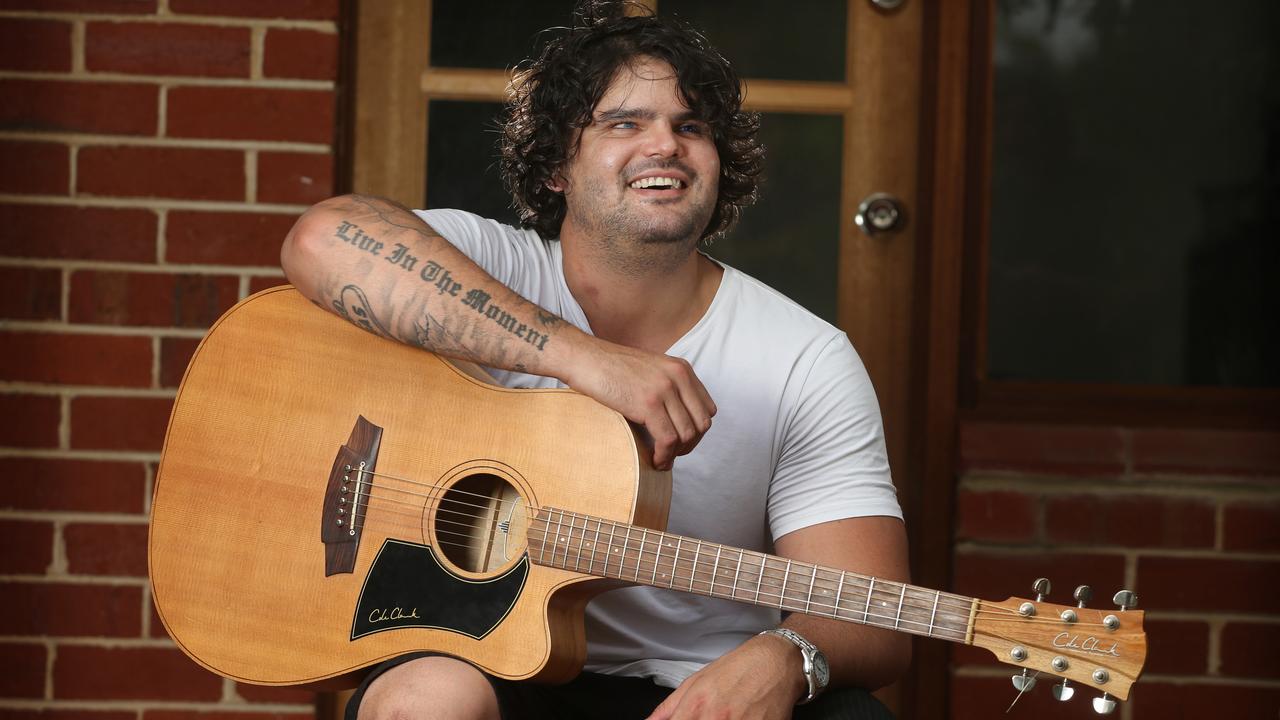
Haven, at 19, became Australia’s youngest casualty of war since Vietnam: his story became very public. He says it forced him to be positive, and Defence got behind him. “I didn’t get left behind,” he says. “The biggest problem with vets is they get forgotten.”
He says there are many ESOs, but few hit the mark. “The fact there’s so many popping up means there’s a long way to go. There should be just one organisation helping these vets, run by Defence and DVA.”
Townsville woman Crystal Peckett has walked the DVA minefield due the problems of her partner, an East Timor and Afghanistan vet. She has also assisted refugees settle in Australia, where the priority was getting them mental health support.
Because the Australian vets have local knowledge and language, Peckett says DVA’s initial efforts are to assist them re-entering the workplace. “Many are mentally unwell,” she says. “They can’t work.”
Peckett says vets, like refugees, need mental health help first, before thinking about work. Otherwise, she says they will fail.
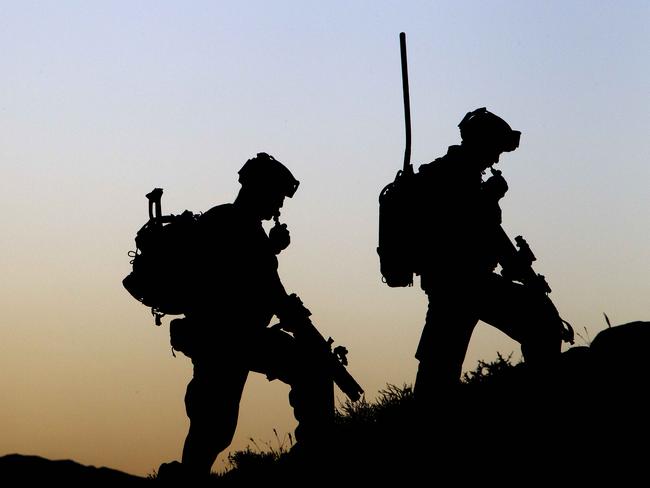
‘I WAS LABELLED A LIABILITY’
THE WILLINGNESS to help young vets can be seen in Adelaide’s new 16-bed
Homes for Heroes facility, linked to the NSW organisation and run by RSL Life Care.
They responded to a national outcry that hundreds of vets were sleeping rough across our cities. But searchers from DVA and ESOs looked far and wide and didn’t find them in the numbers claimed. In Adelaide, only two rooms have so far been taken up by younger vets, indicating the need is so far not great.
The facility is located just around the corner from a private security company called Ludus Training, offering professional protection and advice to companies. Its offices have also become a hub for struggling young vets.
Ludus was founded by Bronson Horan, who spent 12 years in US army and five in the Australian commandos. Horan was wounded in the same IED attack that took the life of Lieutenant Michael Fussell in 2008, and had a painstaking journey of physical and psychological recovery.
The Ludus offices are busy with ex-vets working on the hard-edged business side; a return-to-work rehab service called Helping Heroes; and making space for recovering soldiers to do some modest work in a vet-friendly environment.
For Andrew Clydsdale, 26, his current task is researching armoured vehicles for VIP escorts. Ludus will use the information in its business; Clydsdale feels it’s worthwhile work that suits his expertise.
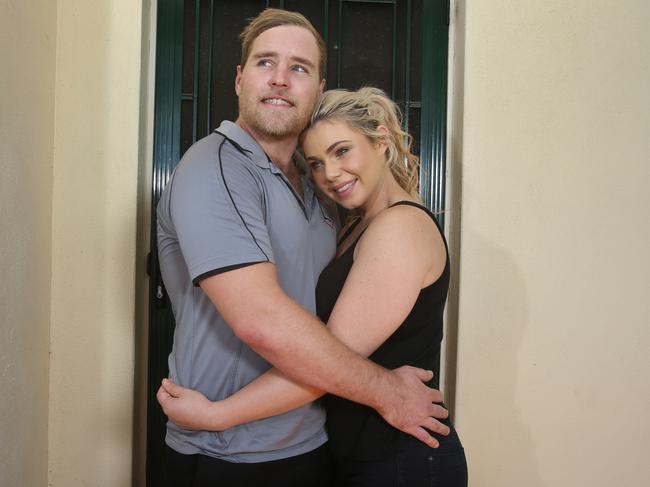
He served with the Darwin-based 1st Combat Engineer Regiment. It has a high disposition to mental injury from Afghanistan service.
Tasked with clearing IEDs from remote roads, conducting dismounted patrols through urban and exposed rural badlands, leading weapons searches in unfriendly villages, escorting VIP or guarding checkpoints that vehicle-ramming suicide bombers target is tough work.
“We were always at the front,” says Clydsdale, from Cooma in NSW. On his first tour, in 2010-11, the first five months went OK. They were located in a forward operating base, far from the main Australian base in Tarin Kowt, probing hostile new ground.
Then one of Clydsdale’s best mates, Richard Atkinson, 22, was killed in an IED blast while leading a patrol in the Tangi Valley.
“That brought it home,” says Clydsdale. “Then three weeks later, another mate, (Sapper) Jamie Larcombe, was shot and killed. That was just unbearable.”
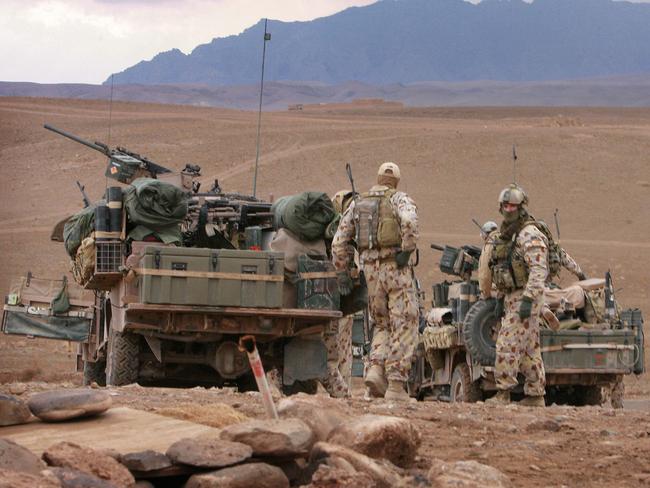
The team was getting fatigued and a little distressed. One day, they missed some hard-to-find non-metal content landmines. Three exploded, blowing tyres but causing no injuries.
Adding to the tension, they could not function (explode) all IEDs upon locating them. Some were in built-up areas. Others had to be disarmed and studied to keep abreast of new devices the insurgents were using.
Back in Afghanistan in 2012-13 for his second tour, promoted to lance corporal, Clydsdale was located at Tarin Kowt.
Much of the work was route-clearing IEDs so the Australians could pack up their forward bases in preparation to exit Afghanistan. They would spend up 10 days on patrol, sleeping in full armour, anticipating attack.
Returning from one mission, they were tasked with clearing 50km of dirt road of IEDs. An Afghan National Army patrol that was following them home hit an IED the engineers had missed. “We copped it from the infantry side, saying we were shit at our jobs,” says Clydsdale.
Back home, he stopped sleeping and his family said he wasn’t the same. He also had a shoulder surgery and lower back problems. “Panadol Osteo by day, alcohol by night,” he says.
A mate told him he was down. He saw a psych and was diagnosed with PTSD and depression. “I was labelled a liability,” he says. “I was not allowed to train with weapons or to be in charge of vehicles. It was pretty much office duties. I got disgruntled and more depressed.”
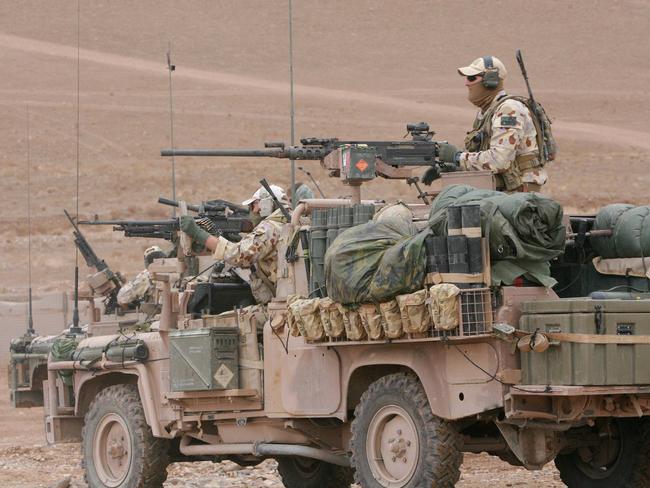
In early 2015, Clydsdale was eligible for a medical discharge but would have to serve, on petty duties, for another year before it came through.
“I was still a lance corporal, in charge of 10 guys, but I was left out, not wanted. My paperwork went all the way to the top and back without one person talking to me.” He was feeling suicidal. “I know if I had stayed, I wouldn’t have made it.”
He discharged, and in doing so forfeited his pension and long service. “It’s pathetic,” he says. Two week ago, he was notified his permanent incapacity payment had been approved.
Of the cradle-to-grave Defence policy, he says: “It’s a lie. My girlfriend saved my life.”
Maddison McKenzie, 24, says things have got better.
“It’s taken us a long time to get where we are now. I see the good in him and we can heal. I love him. Weirdly enough, this has made us stronger.”
MORE: DVA responds to questions from News Corp Australia
*For help with emotional difficulties, contact Lifeline on 13 11 14 or www.lifeline.org.au
*Veterans who feel in need of fast help can contact the Veterans and Veterans Families Counselling Service on 1800 011 046, day or night.
*Veterans can also contact various Overwatch sites on social media such as Facebook, who have networks across Australia and will try to mobilise help.

Add your comment to this story
To join the conversation, please log in. Don't have an account? Register
Join the conversation, you are commenting as Logout
Here’s what you can expect with tomorrow’s Parramatta weather
As summer moves towards autumn what can locals expect tomorrow? We have the latest word from the Weather Bureau.
Here’s what you can expect with tomorrow’s Parramatta weather
As summer moves towards autumn what can locals expect tomorrow? We have the latest word from the Weather Bureau.